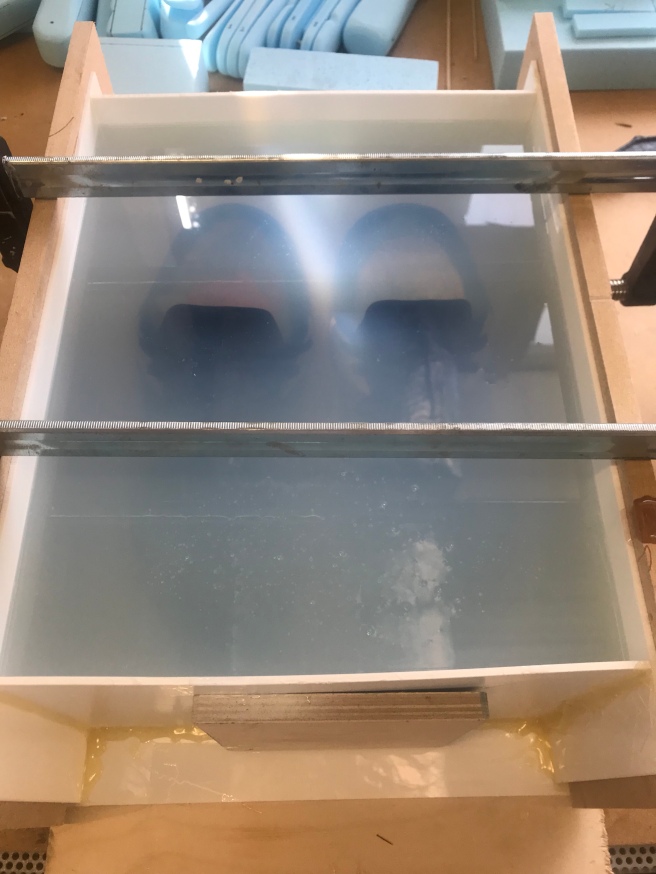Having applied for an exhibition at Dean Clough, I met with the Art Director and showed him a few of my artefacts. He liked the concept and the idea and offered me a space in the converted bookshop that is currently hosting another small exhibit.
It has encouraged me to finish the pieces for a deadline, which is something that is helpful to me. If I have something to work towards then I can plan my time accordingly. I have now three of the larger objects to complete, each involving a large hand stitched or cast element with skills that are my own but need to be developed from the level I currently have.
Having viewed the space I came up with some ideas to have sections of the story on the displays, however in discussion we touched upon the 1960s art and language movement. This is something I need to do further exploration into.
Thinking about my work involving distillations of stories into artefacts, or stories to inform the making process I have to be careful not to be too literal when displaying this. The text could eclipse the artefact first and foremost, meaning that the viewer would read the text and only take away ‘my’ version of it, rather than thinking of their own story about it. It may invalidate their experience of the artefact. They may have their own story and emotional memory that links to brass shoes, or a football or rolling pin that they remember when looking at the pieces. It is the job of the artefact to convey their own emotion and memory as much as the people who told the story in the first place. What the audience contribute to the piece has its own validity. This will be important to capture other peoples views on the work and their own experiences. May be a box or wall to pin thoughts….?
I must remember that my artefacts are not simply a distillation of the story, but they open up other concepts. A couple of diagrams that I have thought about to explain how the work is viewed are below.
The first shows how a story could be told including many different elements, but the core details are distilled down and utilised in the making process. Some of these details are things that are recognisable and can be visualised in the finished artefact, others are elements that aren’t seen but inform the making process. Out the other end, the artefact then has the core details embedded within it but also disperses other meaning to the onlooker where they read into their own ideas and concepts, memories and emotions of a particular person or object or experience.

The second shows how the artefact is in the middle and onlookers have totally different experiences of that same object, so like a venn diagram, elements of each persons experience overlaps at the point of the object but then different ideas, thoughts and stories are felt and experienced from it.

From the exhibition I would like to see how participants see the exhibition and ask them to comment on what they felt seeing the object and what they felt, but also see what other people say about the objects and how they feel, if they can relate to them as well.
I’m excited but nervous!!!!























